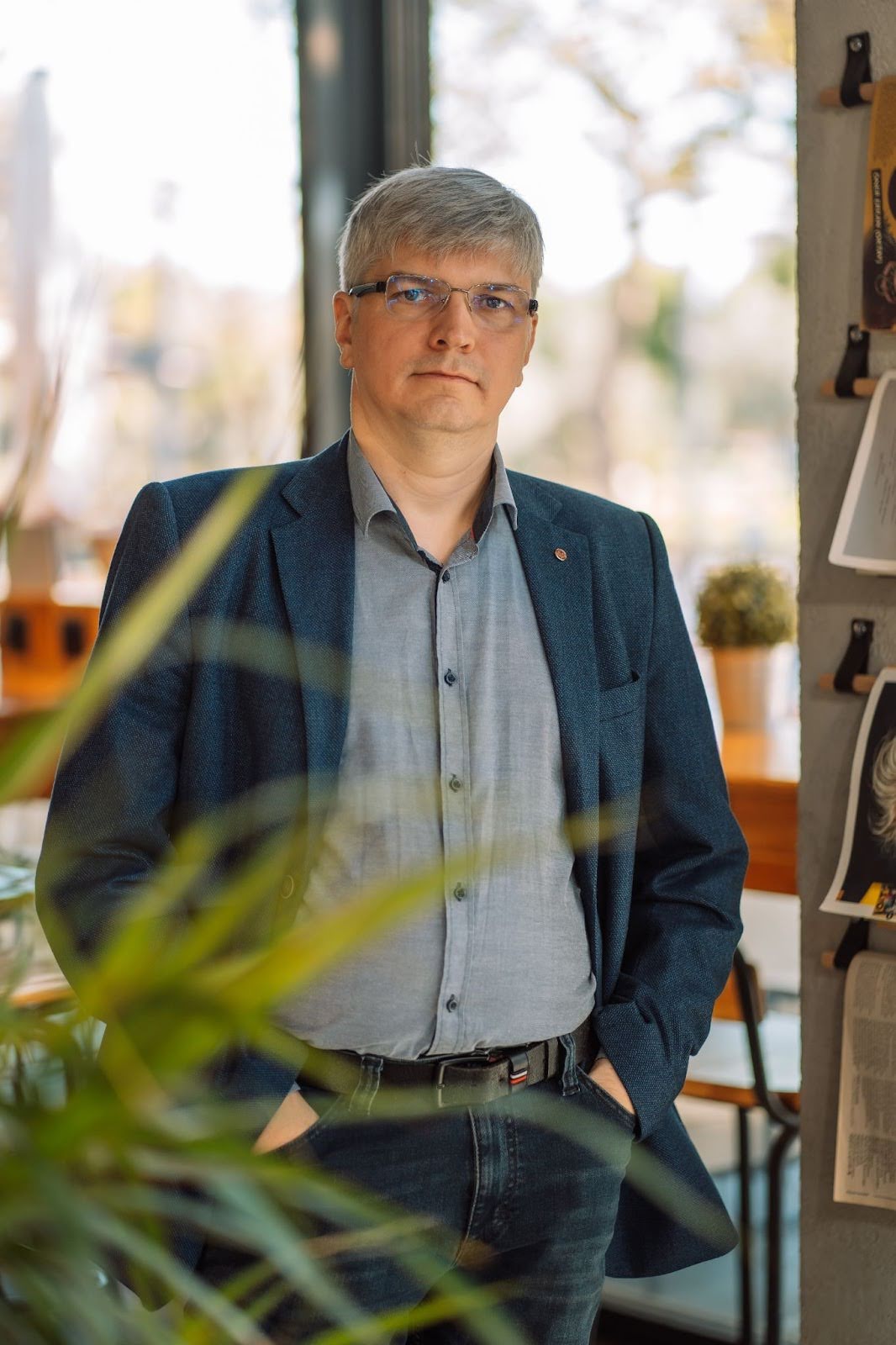Engineering the Future: How Platon Became a Benchmark in Transport IT

When Russia launched the ambitious “Platon” toll collection system, a project designed to modernize freight transport monitoring across the entire federation, it marked a turning point for digital infrastructure at the national level. But behind this nationally recognized success stood a team of engineers and architects whose dedication and technical foresight made the system revolutionary. Among them was Andrei Bobrov, a systems architect whose contribution to Platon’s security, monitoring, and communications infrastructure was instrumental in the platform earning the Runet Prize in 2016 in the category of Technology and Innovation. This was recognition for the most impactful federal IT initiative of the year.
“For record time, we created one of the most technologically advanced and unique projects,” said the CEO of RT-Invest Transport Systems at the award ceremony on November 22, 2016. It was a moment of validation not only for the company but also for IT specialists like Bobrov, whose architectural decisions shaped the platform’s reliability and resilience.

A National-Scale System Demands World-Class Engineering
Platon (short for “Plata za Tonny” or “Payment for Tons”) is a satellite-based toll collection system introduced to charge heavy trucks (over 12 tons) for the use of federal roads. It involves more than 500 monitoring stations, millions of kilometers of road coverage, and real-time tracking of truck movements using GLONASS/GPS on-board units. The scale was unprecedented in the Russian IT sector, particularly for a system expected to function in extreme climates and remote areas with little existing infrastructure.
Andrei Bobrov joined the project as Head of the Telecom Department and was in charge of system architecture and monitoring integration. “I was brought in to lead three critical domains: networks, monitoring, and security,” says Bobrov. “But what I really ended up doing was building the foundation of trust, between machines, between systems, and between people working remotely across Russia.”
Securing the Backbone of Platon
One of Bobrov’s primary responsibilities was securing data transmission between on-board units and central processing systems. Trucks equipped with devices would send positioning and usage data to Platon’s servers, allowing the system to calculate road usage fees. “The biggest risk,” explains Bobrov, “was that any vulnerability in transmission could lead to data tampering, whether to evade tolls or attack national infrastructure.”
To mitigate this, Bobrov designed and implemented a hardware-based encryption system using CryptoPro HSM modules. These devices embedded cryptographic keys directly into on-board units, ensuring that data was encrypted before leaving the truck, even in transit. “It wasn’t just about protecting the data,” he explains. “It was about building an architecture where trust is enforced by design, not by policy.”
This secure model proved to be not only effective but also influential. By December 2024, more than 1.9 million registered trucks were using this encrypted transmission system. The approach has since influenced security practices in other IoT-heavy sectors, including urban traffic monitoring, remote metering, and logistics.
VPN in the Wild: Building Resilience in the Field
Another major challenge for Platon was the deployment of roadside monitoring stations in remote or harsh regions, from the forests of Siberia to the deserts of Kalmykia. These stations collect license plate data, photographs, and video footage of passing vehicles, transmitting it all to data centers in real time.
“Many of these areas didn’t have stable infrastructure, and we couldn’t just run fiber everywhere,” says Bobrov. Instead, he developed encrypted VPN tunnels using climate-resistant crypto gateways, carefully choosing hardware that could withstand -30°C to +40°C operating ranges.
Bobrov created self-healing software scripts that could automatically detect outages, reroute traffic, or reboot modules, effectively enabling remote operation with near-zero maintenance. Today, more than 510 monitoring stations across the nation operate using these hardened VPNs created by Bobrov.
Open Source at Federal Scale
One of Bobrov’s lasting contributions to Platon was introducing open source principles into the architecture of a massive federal system. “At that time, most public-sector IT systems were vendor-locked. But with the push for import substitution, we had the opportunity to rethink everything,” he says.
He began integrating Red Hat technologies across network, monitoring and middleware layers sparked a deeper commitment to mastering the platform through official certifications, a journey that culminated in his recognition as one of the top ten highest-certified Red Hat experts in the world, earning the Red Hat Certified Architect Level XII.
Later, he became a Red Hat instructor, delivering official training to engineers across sectors and reinforcing the principle that resilience comes from transparency, auditability, and community support, core tenets of open-source thinking.
Monitoring as an Ecosystem
Building monitoring for a system like Platon isn’t just about metrics, it’s about context. Bobrov oversaw the implementation of a centralized monitoring platform that integrated not only hardware telemetry but also network health, security incident alerts, and compliance audits.
This required deep collaboration between departments and vendors. “It wasn’t enough to monitor a server. We had to understand how one component affects the others, how traffic flow affects encryption load, how a hardware failure in Tatarstan could affect reporting in Moscow.”
To achieve this, Bobrov introduced cross-domain dashboards, integrating observability into every layer. The result? “We didn’t just have visibility. We had actionable intelligence.”
A Distributed Team, United by Design
One often-overlooked aspect of Platon’s success was its distributed team model. With engineers and operators working from dozens of cities across Russia, the question arose: could such a massive system be managed remotely?
Bobrov says yes, with the right design. “I demonstrated that distributed control works when systems are built for it. We had automated deployments, secure access control, and real-time monitoring, everything needed to run a high-stakes system with a remote workforce.”
This model was later studied and replicated in other national projects, especially during the COVID-19 pandemic, when remote management became not only viable but essential.
Recognition and Legacy
In 2016, Platon’s innovation and execution were recognized at the national level when it won the Runet Prize in Technology and Innovation. This prestigious award has been granted to such major companies and industry leaders as Yandex, Mail.ru, Google, Microsoft, and Yota. According to the official site, the award celebrated the “most successful federal IT project of the year.”
Bobrov’s contribution was instrumental to this recognition. “It wasn’t just about launching a project. It was about launching a standard that has since been successfully implemented in many other projects benefiting a wide range of critical industries,” he reflects.
Beyond Platon: A Career Built on Innovation
Since Platon, Bobrov has continued working on international IT projects for companies like Fujitsu, Volvo, and General Electric, bringing the same focus on resilience, security, and interoperability. His certifications span Google, Microsoft, Cisco, Red Hat, and Juniper, and his mission remains the same: build systems that outlast trends and adapt to change.
“Technology isn’t just about solving today’s problems. It’s about preparing for tomorrow’s surprises.”
Bobrov’s work demonstrates that with the right vision and the courage to challenge outdated paradigms, IT professionals can do more than support an enterprise—they can reshape an entire ecosystem.

Source: Engineering the Future: How Platon Became a Benchmark in Transport IT


